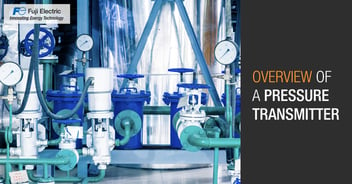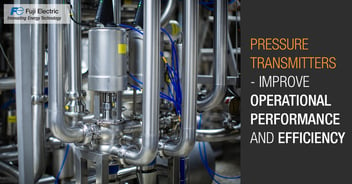Selecting the appropriate pressure transmitter is crucial
For the measurement of pressure in a variety of applications, pressure transmitters are extensively utilized in a wide range of industries. Pressure transmitters are used in the oil and gas industry to check the pressure in storage tanks, pipelines, and oil and gas wells. They are used to monitor the pressure in storage tanks to stop leaks and to make sure the pressure in pipes stays within safe operating limits. In power plants, pressure transmitters are used to track the pressure of steam and water in the boilers, turbines, and condensers. To maintain effective functioning and avoid equipment damage, they are utilized to regulate the pressure in these systems. Pressure transmitters are used in the chemical industry to check the pressure in pipelines, storage tanks, and chemical reactors. To ensure safe and effective functioning, they are utilized to regulate the pressure in these systems. Water and wastewater treatment facilities utilize pressure transmitters to keep an eye on the water pressure in storage tanks and pipelines. In order to maintain effective treatment procedures and avoid leaks and spills, factory operators regulate the pressure in the systems. In manufacturing, pressure transmitters are used to track the pressure in hydraulic and pneumatic systems.
Selecting a suitable pressure transmitter for various applications is essential to achieve better results. Accurate pressure measurement, dependable operation, and enhanced process control are all possible with the correct pressure transmitter. On the other hand, using the incorrect pressure transmitter can result in inaccurate readings, decreased effectiveness, and even equipment damage. It's important to pick a pressure transmitter whose pressure range corresponds to the application's anticipated operating conditions. The transmitter may not provide accurate measurements if the pressure range is too high or too low.
Important things to consider
While selecting the transmitter, it is important to think about the temperature, humidity, and corrosive substances in the area where the pressure transmitter will be used.
- Choose a pressure transmitter that is made to withstand the conditions of the application.
- Think about what kind of output signal the control system needs, such as voltage or current, digital, or HART signals.
- Choose a pressure transmitter that works with the system that controls the pressure.
- Even though the price of the pressure transmitter is an important factor, it shouldn't be the only one. Choose a pressure transmitter that is accurate, reliable, and cheap. This will give you the best value for your money.
Choosing the incorrect pressure transmitter can lead to a number of problems, such as the following:
- The biggest problem with selecting the incorrect pressure transmitter is that it may lead to inaccuracies in pressure readings. This may result in improper process control, lowering efficiency, and potentially damaging equipment.
- Poorly chosen pressure transmitters may not be suited for the application's environmental circumstances, which would impair dependability and raise downtime.
- If the pressure transmitter's output signal is incompatible with the control system, it may cause integration issues and poor process control.
- Selecting the incorrect pressure transmitter might lead to higher costs because it might need to be changed or other equipment might need to be bought to fix compatibility problems.
- Wrongly chosen pressure transmitters may lessen process control, which could result in ineffective procedures and decreased production.
Achieve Stability, reliability, and rangeability with Fuji Electric
Leading pressure transmitter maker Fuji Electric provides various high-quality and dependable solutions for various applications. Pressure transmitters made by Fuji Electric are renowned for their precision, robustness, and usability. Even in challenging industrial conditions, Fuji Electric pressure transmitters are engineered to deliver precise and reliable pressure measurements. Robust materials are used in constructing Fuji Electric pressure transmitters, which are made to last under difficult situations. Fuji Electric pressure transmitters are easy to use, with a clear display and simple controls that make it simple to keep track of pressure levels and manage procedures. From general-purpose pressure measurement to high-precision measurements in specialized industries, Fuji Electric offers a variety of pressure transmitters to satisfy the needs of various applications. It is simple to monitor and regulate pressure levels in various industrial contexts thanks to the smooth integration of Fuji Electric pressure transmitters with other control systems and equipment.
Fuji Pressure transmitters enable long-term stable measurement of pressure or differential pressure (flow rate). They have diaphragms made of gold and ceramic that don't corrode and are used in desulfurization systems, hydrogen production, and distribution systems. Diaphragms made of zirconium can be used to make hydrochloric acid, caustic soda, and bleaching agents. Titanium diaphragms are used in factories that make chlorides and sulphur compounds. Hastelloy-C can be used with both organic and inorganic acids as well as alkalis. For alkalis and fluorine, Monel is used. Tantalum for hydrochloric acid, sulphuric acid, nitric acid, and aqua regia. They can be put on any pipe and are very stable for a long time—over ten years. They respond quickly, in less than 60 milliseconds, and can be set up in the field with push buttons. Because of the way it is made, the remote seal type transmitter can measure accurately even when the temperature is high, and the air pressure is low.
Fuji Electric is a reputable manufacturer of pressure transmitters of the highest caliber that are created to satisfy the requirements of numerous industrial applications. Fuji Electric pressure transmitters are the best option for measuring and controlling pressure in industrial settings because of their precise measurement, robustness, use, versatility, and ease of integration.
 China
China Europe
Europe France
France Hong Kong
Hong Kong Indonesia
Indonesia Japan
Japan Singapore
Singapore Thailand
Thailand USA
USA

